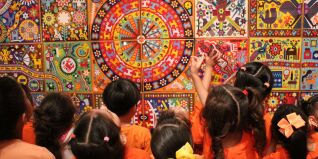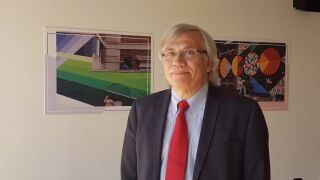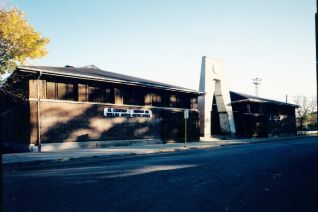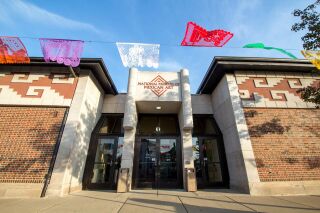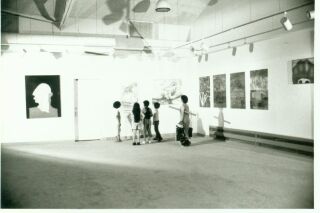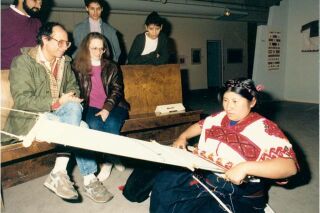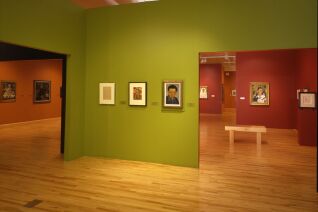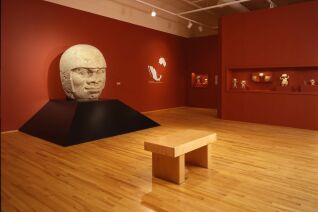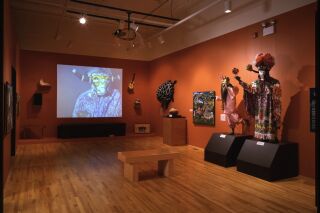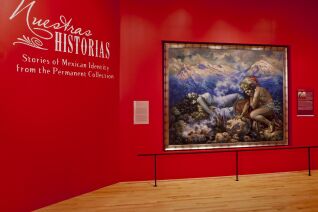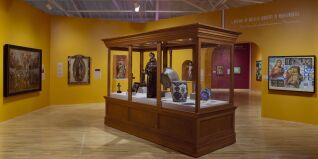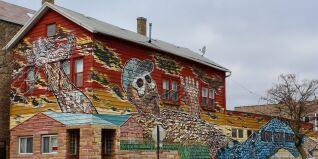Happy Holidays from NMMA! Check our holiday schedule here.
History, Mission + Impact
Founded in 1982, we represent the Mexican community from our own point of view and our own voice.
Our Mission
To stimulate knowledge and appreciation of Mexican art and culture from both sides of the border through a significant permanent collection of Mexican art, rich visual and performing arts programs, high quality arts education programs and resources and professional development of Mexican artists. The Museum welcomes all people and strives to foster a world where all are included.
History
In 1982, Carlos Tortolero organized a group of fellow educators and founded the Mexican Fine Arts Center Museum, which opened its doors in 1987. The goal was to establish an arts and cultural organization committed to accessibility, education and social justice. The museum also provided a positive influence for the local Mexican community, especially since many other art institutions did not address Mexican art.
Over the years, the institution has grown, its audience has broadened, and its reach now extends across the United States and beyond. To support this evolution, in 2001, the museum expanded to a 48,000 square-foot, state-of-the-art facility in the heart of Pilsen and in 2006 we unveiled a new name, the National Museum of Mexican Art.
NMMA Through the Years
Impact
Today, the National Museum of Mexican Art stands out as the most prominent first-voice institutions for Mexican art and culture in the United States. We are home to one of the country’s largest Mexican art collections, including more than 22,000 seminal pieces from ancient Mexico to the present.
As the first Latino museum accredited by American Alliance of Museums, we recognize our unique responsibility to present exhibitions of artistic and cultural value and to deliver high-quality education that demonstrates the breadth and depth of Mexican art, culture and history.
Twenty of our exhibitions have traveled across the United States and six have traveled to Mexico. Landmark exhibitions that have traveled include The Art of the Other Mexico (1992), Maria Izquierdo (1996), The African Presence in Mexico (2006), and Frida's Contemporaries: Women Artists of Modern Mexico (2007).
The National Museum of Mexican Art also hosts cultural programs — including symposia, theater, dance, music, authors and performance companies — that share the rich diversity of the Mexican culture. Our annual Sor Juana Festival honors the accomplishments of Mexican women with women’s performances.
Now, more than ever, our museum stands in solidarity with all communities targeted by hateful rhetoric and racist attacks.
Sin Fronteras: Reaching Beyond Borders
The National Museum of Mexican Art defines Mexican culture as sin fronteras (without borders), and our programs and exhibitions capture the wide range of Mexican cultural expressions and art forms, from ancient to modern and on both sides of the border. We represent the Mexican community from its own point of view and in its own voice.
We believe in art as a bridge between communities, and we believe that art in education expands minds and breaks down barriers while preserving cultural heritages. The National Museum of Mexican Art offers a wide range of educational programs for children and families, teens, school groups, and educators. Our art exhibitions, performance arts and educational programs are experienced by more than 150,000 visitors annually, including 52,000 K–12 students.
The National Museum of Mexican Art is also a national leader and mentor for cultural institutions and community organizations, and for our advocacy of “first voice” and cultural equity issues. From building a world-class institution in Chicago’s largely Mexican American neighborhood of Pilsen to creating groundbreaking exhibitions and forming partnerships with institutions in Mexico, the National Museum of Mexican Art has a history of being bold and activist in our approach and reach.
